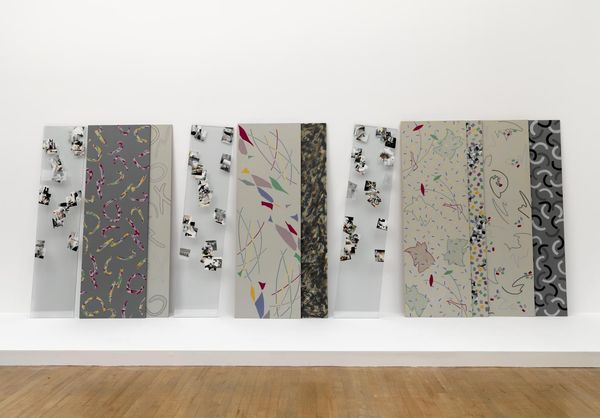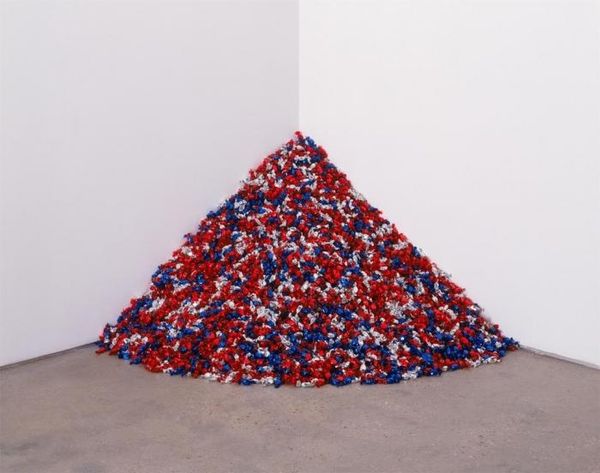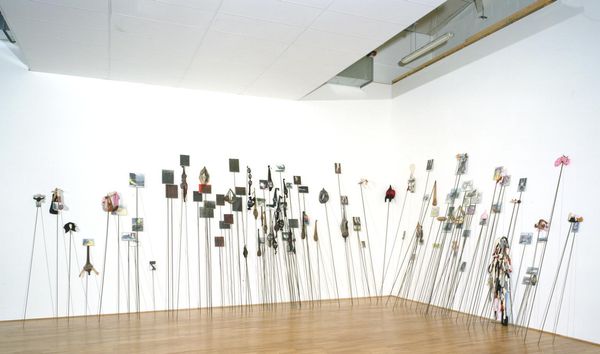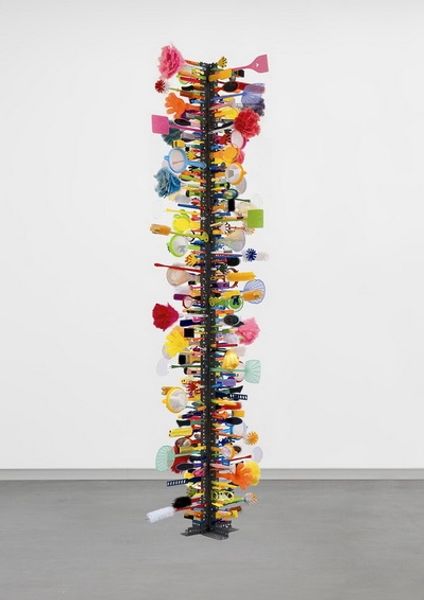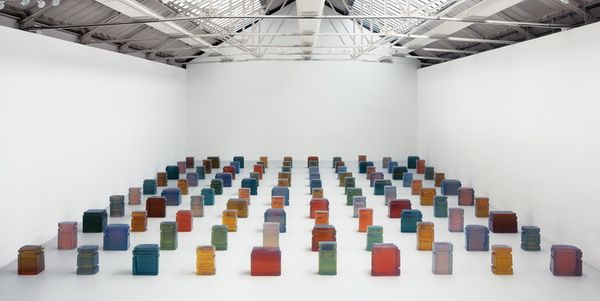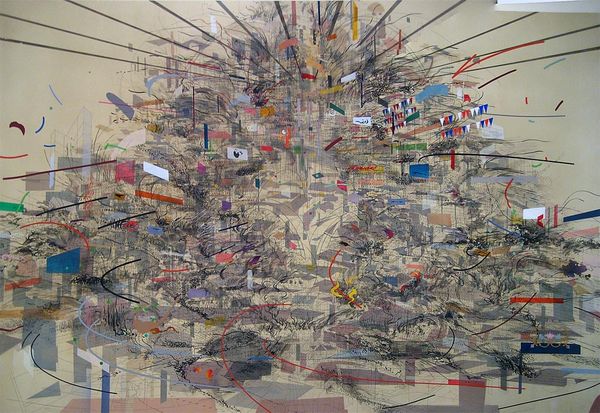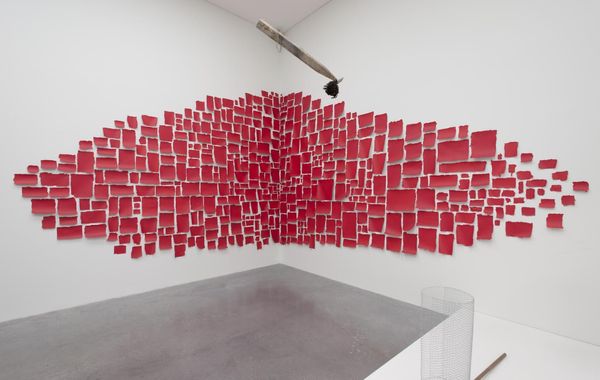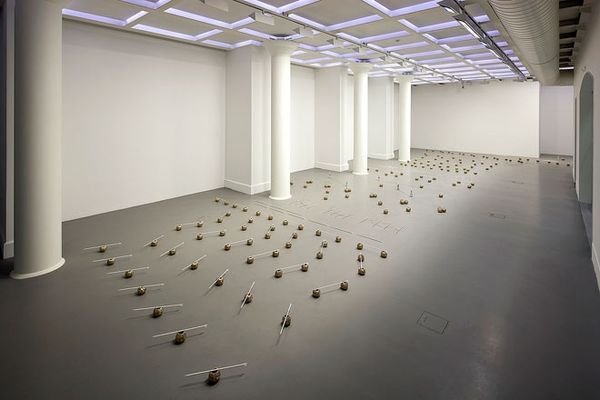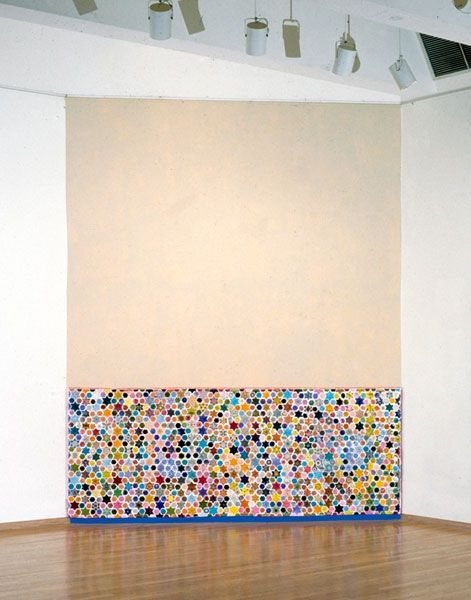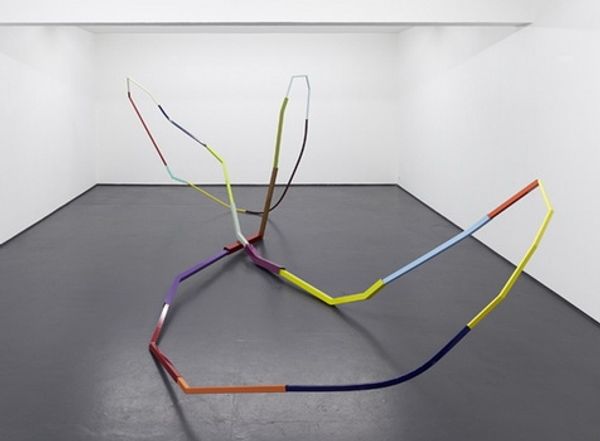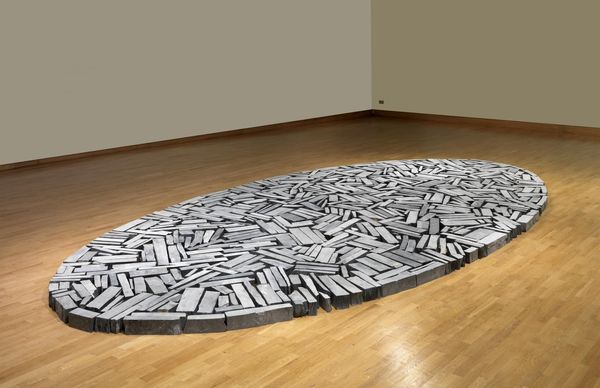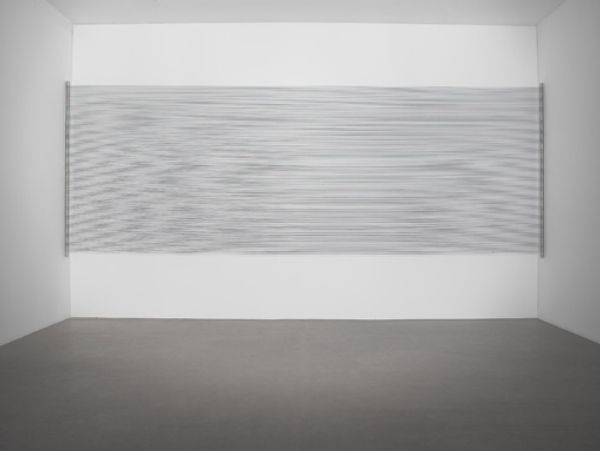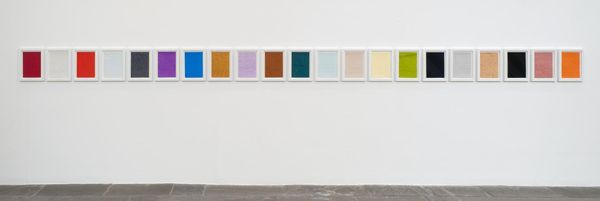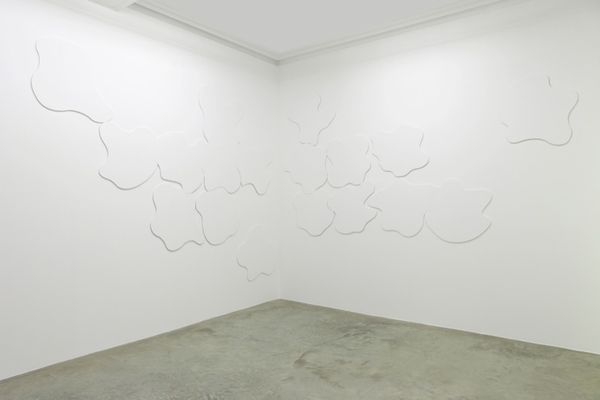
Dimensions: overall display dimensions variable
Copyright: © Pae White | CC-BY-NC-ND 4.0 DEED, Photo: Tate
Editor: Looking at Pae White's installation, Morceau Accrochant, its overall size is variable, it feels like a suspended cloud of confetti, simultaneously chaotic and ordered. What do you make of this playful piece? Curator: It’s a kind of shimmer, isn’t it? Like catching light on water or leaves rustling in a breeze. I think White invites us to consider ephemerality; each individual element seems insignificant, yet together they create something captivating. Does it make you think of anything specific? Editor: Now that you mention it, it reminds me of those beaded curtains from the 70s. Curator: Precisely! Nostalgia, perhaps? Or maybe how simple components can reshape a space, alter our perception. Editor: I see what you mean. It’s definitely more than just pretty decorations. Curator: Indeed, it's the quiet revolution of the everyday.
Comments
tate 6 months ago
⋮
http://www.tate.org.uk/art/artworks/white-morceau-accrochant-t11918
Join the conversation
Join millions of artists and users on Artera today and experience the ultimate creative platform.
tate 6 months ago
⋮
Morceau Accrochant is a hanging mobile installation consisting of 482 strands of string and silk-screened paper suspended from the ceiling to create a three-dimensional volume of dense colour and, what the artist has called, ‘an exploration of movement contained’ (quoted in Alex Farquharson, 'About the Exhibition', http://hammer.ucla.edu/exhibitions/detail/exhibition_id/63, accessed 9 June 2010). Each strand of polyester string is a composite of a long yellow portion to which a shorter red length is knotted. Five or six discs of colour-saturated paper are threaded onto each red section, creating a flurried mass that recalls both the applied and decorative arts as well as the Bauhaus functionality of the architect Walter Gropius (1883–1969). The variously-sized discs are two separate pieces adhered to create a bi-coloured unit, the top part of which has had a radial section excised. White envisions this shape as a stylized leaf, hoping with Morceau Accrochant to, ‘[capture] the incoherence of a swirl of leaves or the frenzy of birds into a freeze frame which would allow for further and deeper inspection. The stylization of the feathers into leaves and back to feathers again is maybe another way in which to get closer to the subject through some sort of caricature.’ (Email to Tate curator Evi Baniotopoulou, 29 October 2004, Tate Gallery Records.) Site specificity is integral to the artist’s hanging mobile, with the ‘footprint’ or shape of the installation often dependent upon the space it will occupy. At Tate, the installation has taken the form of a rounded triskelion symbol, the inlets of which White feels ‘transform the piece into a sort of implied symbol of some sort of forgotten magic’ (email to Tate curator Evi Baniotopoulou, 29 October 2004, Tate Gallery Records). The cluster of coloured paper discs occupy around 60 cm of vertical space and, hovering approximately 153 cm off the ground, encourage a phenomenological response from viewers.
